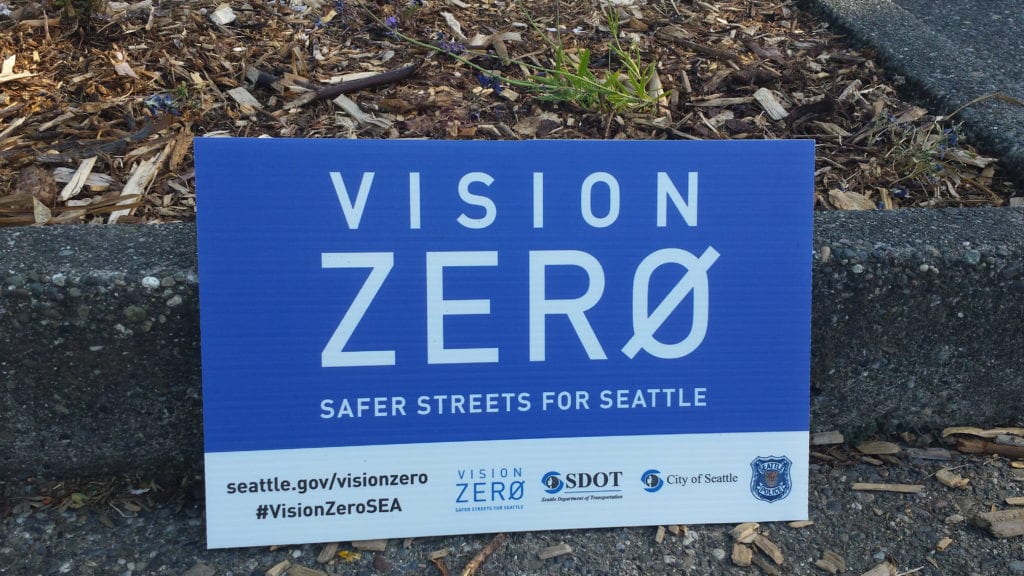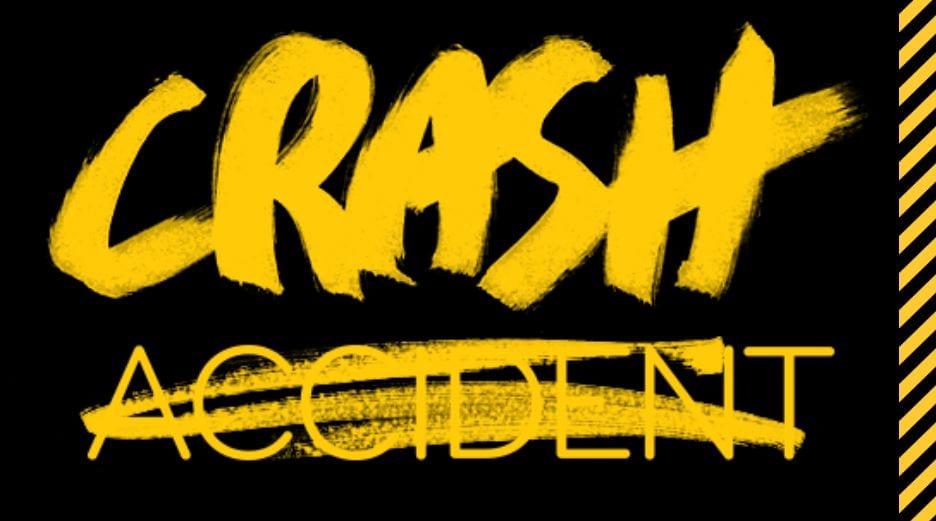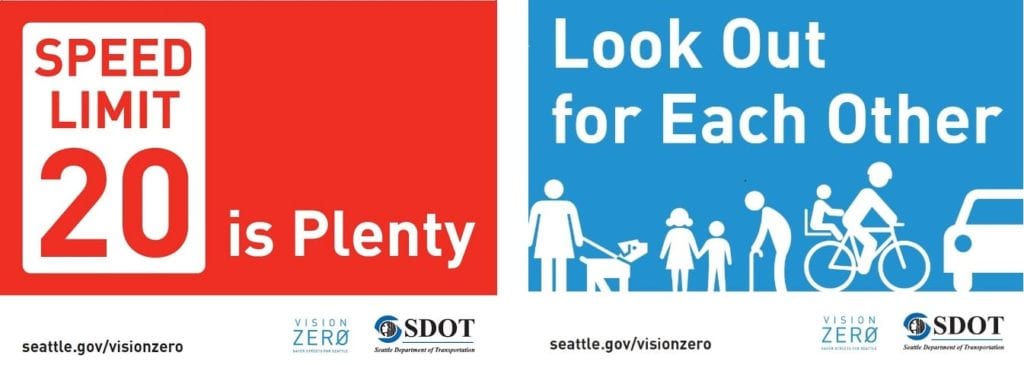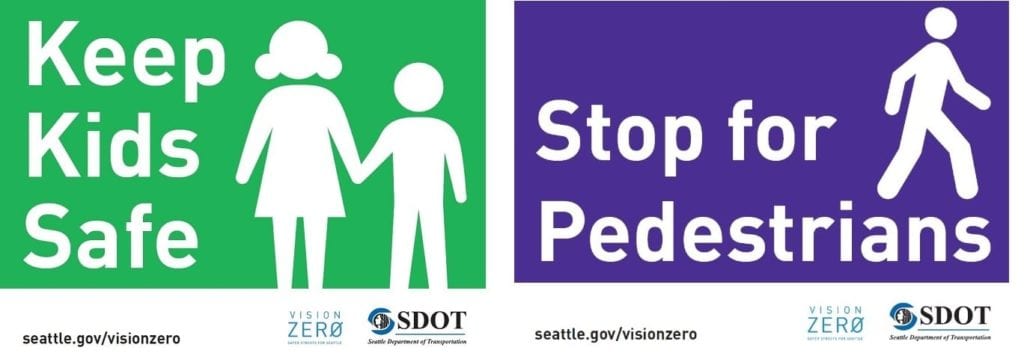Mayor Jenny Durkan has announced 4 steps to make our streets even safer & achieve our Vision Zero goal of ending traffic deaths & serious injuries on city streets by 2030.
Along with making crosswalks safer, one step is reducing speed limits to 25 miles per hour (MPH) on major streets citywide. The speed limit on smaller neighborhood streets was already reduced to 20 miles per hour.
Today we launched the effort by reducing speeds to 25 MPH along Rainier Ave S., which will now have a consistent speed limit for 3.5 miles south of S Alaska St.
In 2020, we will begin lowering speeds on the rest of Seattle’s major streets, starting in Southwest and Southeast Seattle. We’re also working closely with our partners at WSDOT to lower speeds on state highways within our city, including Aurora Ave and Lake City Way.
Traffic deaths & injuries are a serious epidemic, & reducing speed limits helps ensure everyone can travel safely.
Severe crashes are increasing all over the country. Even in Seattle, which is consistently recognized as one of the safest cities in the country, there are over 13,000 crashes a year. On average, 20 people die, and 150 people are seriously injured each year, and while the trend dipped in 2018, it has gone back up in 2019. This trend is not acceptable. We don’t want anyone to experience the tragedy of a friend or loved one being killed by a collision.
Reducing speed limits has a proven safety benefit.
A person walking, rolling, or biking is twice as likely to be killed if they are hit by a person driving 30 MPH than someone going 25 MPH. 90% of people hit by cars going 20 MPH are injured but survive.
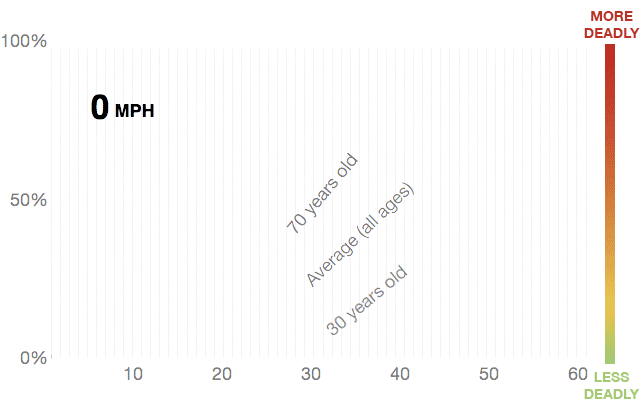
A person’s chance of surviving being hit by a car decreases drastically with faster speeds. Graphic: ProPublica. Data: AAA Foundation for Traffic Safety report.
We’ve seen increases in safety everywhere we’ve reduced speed limits to 25 mph.
- Downtown & South Lake Union: 10% fewer crashes and 20% fewer severe injuries and deaths
- Greenwood & Phinney Ridge: Crashes were lowered by 34%
- Greenlake & Roosevelt: 44% reduction in collisions
It’s not just Seattle. New York City dropped speed limits throughout their city to 25 MPH in 2014. From 2014 to 2018, they were one of the only major cities in the country to see a consistent drop in traffic fatalities. The World Health Organization has concluded that a 5% reduction in average speed can result in a 30% decrease in traffic fatalities.
Slow & steady wins the race. Speeding causes collisions, & collisions cause 25% of traffic congestion.
We expect a negligible impact on how long it takes people driving to get where they’re going. Most trips will only take 20-40 seconds longer to drive a mile at 25 MPH than the current speed limit. About a quarter of the time we spend sitting in traffic is due to collisions, and lowering speed limits prevents about a third of them. It’s a win–win.
Practicing the 3 E’s. Along with engineering, enforcement & education are both critical parts of our Vision Zero efforts.
As we implement lower speed limits, we’ll be installing signs at more frequent spacing so drivers see the speed limit more often. And as part of Mayor Durkan’s four steps, in 2020, Vision Zero Street Teams will share information about lower speed limits at educational events throughout the city. Speed limit information and safe driving tips will be shared through print, social, and ethnic media.
The City will also create a new Major Crash Review Task Force which will convene a panel of experts to analyze every serious and fatal collision in our City and provide recommendations to prevent similar incidents from happening again. The City will also launch Vision Zero Street Teams raise awareness around transportation safety issues and educate the public about lower speed limits and other infrastructure projects.
We work closely with our friends at the Seattle Police Department (SPD) to enforce the rules of the road and keep everyone safe, with a focus on warnings first to raise awareness. We’re working with SPD to develop further strategies to ensure traffic enforcement is equitable and does not disproportionally impact communities of color. We use data to inform focus areas to make sure to consider both collision trends and demographics to determine locations for enforcement. We take a high visibility approach to enforcement and inform people about our additional hours of enforcement through our network of dynamic message signs and media. After all, the intent of the added hours of enforcement is not to issue citations, but to change behaviors.
